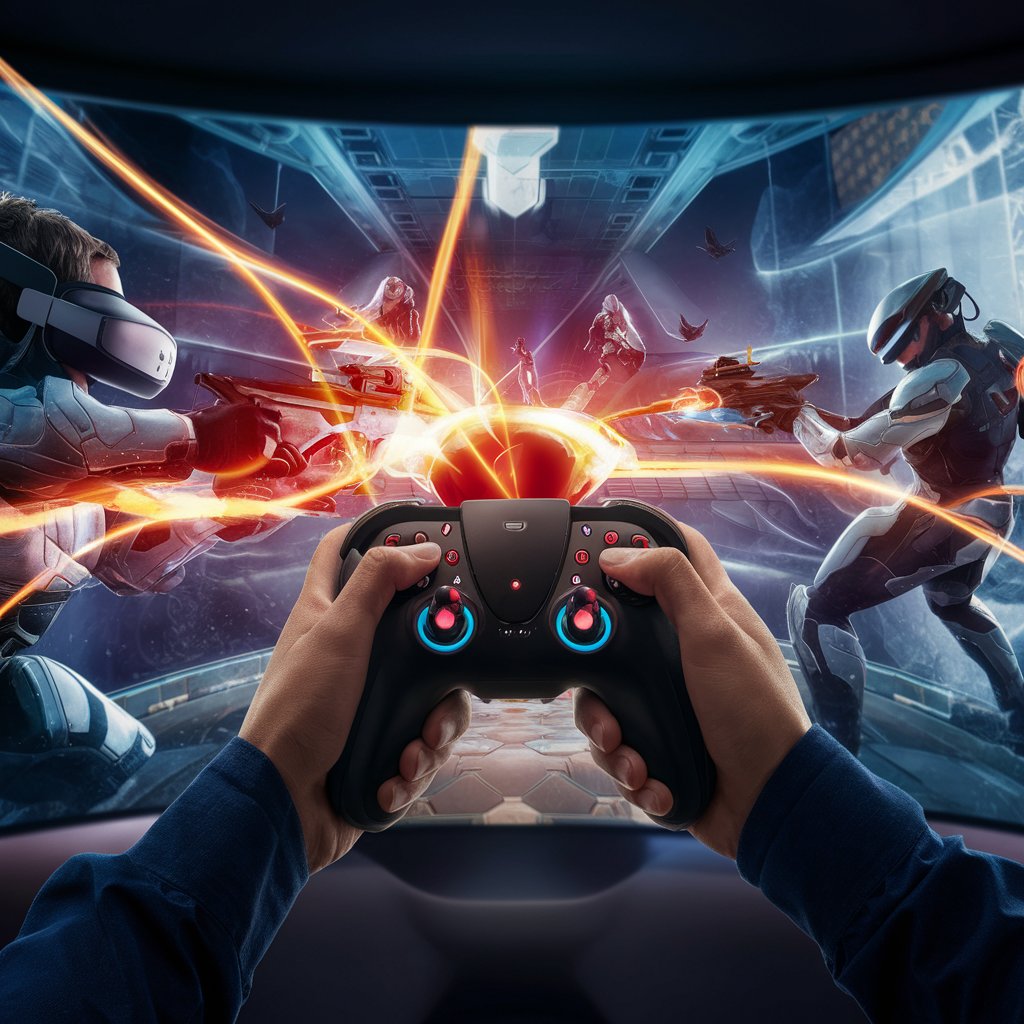Haptic feedback is a transformative technology that is significantly enhancing the experience of virtual reality (VR) in competitive gaming. By providing tactile sensations that simulate touch and interaction within virtual environments, haptic feedback creates a more immersive and engaging gaming experience. This technology plays a crucial role in bridging the gap between the virtual and physical worlds, offering players a more intuitive and responsive way to interact with their games.
In competitive gaming, precision and reaction time are critical factors that can determine the outcome of a match. Haptic feedback enhances these aspects by delivering real-time physical sensations that correspond to in-game actions. For example, when a player fires a weapon in a VR shooter, haptic feedback can simulate the recoil of the gun, giving the player a tangible sense of impact. This increased sensory input helps players better gauge their actions, leading to more precise and effective gameplay. The ability to feel the in-game interactions, such as the resistance of a virtual object or the vibrations of a vehicle, allows gamers to respond more accurately and intuitively.
The integration of haptic feedback also contributes to a more immersive gaming experience by making virtual interactions feel more realistic. Traditional gaming setups often lack this sensory depth, which can make virtual environments feel less engaging. With haptic technology, players can experience a wide range of sensations, from the subtle texture of surfaces to the intensity of explosions. This heightened sense of realism helps players feel more connected to the game world, enhancing their overall enjoyment and engagement.
Moreover, haptic feedback plays a significant role in training and skill development for competitive gamers. Training with haptic-enabled VR systems allows players to practice and refine their skills in a more dynamic and responsive environment. For instance, in a competitive racing game, haptic feedback can simulate the feel of different terrains and road conditions, providing valuable insights into how to handle various driving scenarios. This sensory feedback enables players to develop better muscle memory and reaction times, which are crucial for high-level competition.
The benefits of haptic feedback in VR competitive gaming extend beyond individual gameplay to team dynamics and communication. In multiplayer games, the ability to convey and receive tactile signals can improve coordination and strategic planning. For example, haptic cues can be used to communicate in-game events or alerts, allowing teams to respond more effectively to changing situations. This added layer of communication enhances teamwork and contributes to a more cohesive and synchronized gaming experience.
Despite its advantages, the implementation of haptic feedback in VR competitive gaming does present some challenges. The technology requires sophisticated hardware and precise calibration to deliver accurate and meaningful sensations. Additionally, there is a need for developers to create games that fully utilize haptic feedback capabilities, ensuring that the technology enhances rather than distracts from the gameplay experience.
Overall, haptic feedback is playing a pivotal role in advancing VR competitive gaming by providing players with a more immersive and responsive experience. By enhancing precision, realism, and training effectiveness, this technology is shaping the future of competitive gaming and offering new opportunities for gamers to excel in their virtual pursuits. As haptic technology continues to evolve, its impact on VR gaming is likely to grow, bringing even more innovations and enhancements to the competitive gaming landscape.

